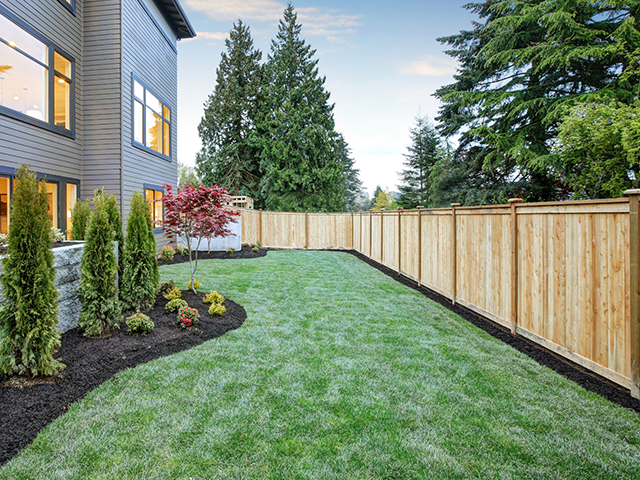How to prepare your lawn for winter
28 May 2018

Did you know that the best season for making your lawn luscious, weedless and more cushiony than a couch turns out to be: Autumn! That’s right, Autumn.
Most people give Spring all the credit for rejuvenating and producing a House and Garden-worthy lawn, but those people are mistaken. Sure, spring lawn prep has its perks also. But the trick is to do the work now so when Spring does come along, you can spend your time enjoying your lawn instead of working on it.
How do you prep your lawn in Autumn so it can sustain the soggy, cold winter? Let us fill you in.
Land, lawns and gardens - get the essentials on maintaining a great lifestyle block. Download your free guide now.
First, you’ll need to sacrifice.
Don’t worry, it’s not as dramatic as it sounds, it is just the term for the process of raking out excess dead grass from your lawn. It is also called de-thatching, and it is necessary to remove the thatch (dead grass) which would have built up over Spring and Summer.
In those months, thatch is good - the dead grass leaches nutrients into the soil and holds moisture so your lawn stays fed when the climate is making it parched. But now, excess thatch will take longer to break down in the cooler temperatures, and could actually harbour pests and disease instead. Which are not so healthy for your precious lawn.
Our lawn gurus recommend a thatch of no more than 1cm as we head into winter.
Get sweeping
Once you’ve put your rake down, pick up a broom or blower because you’re going to need to keep your grass leaf-free.
Just like too much thatch, those leaves will weaken the grass by blocking it from the sun and squishing it - and once they start to decompose the pests and disease will move into the damp conditions.
Unless you want that perfectly manicured aesthetic, it will be okay to leave a few leaves here and there - and don’t forget mulching them up with your lawnmower will add a small layer of extra thatch.
Spike it
Up the oxygen in your grass by stabbing it with spikes. The little holes improve O2 and drainage movement through the soil so it doesn’t get water logged over the soggy winter months.
You don’t need to splash out on any special spiking equipment, either. Instead, take your garden fork and gently stab it about 10 to 15cm into the lawn, shake it a little to open up the soil - and boom, you’ve spiked your lawn.
Spike your entire lawn and pay special attention to compacted areas. Spiking is also great to invite earthworms along, who are the perfect guests on your lawn as they spread nutrients and naturally aerate the soil with their own wee worm holes.
De-weed
This is one you need to pay attention to year-round. A lawn is no place for weeds, and certainly not a lawn like yours (which we know if your pride and joy because your have taken the time to investigate how best to help it flourish).
Weeds take Autumn as a bit of an invitation to grown on lawns, so if you keep them under control now they won’t be able to get stuck in during winter and create even more de-weeding work for you in winter.
Ask your local gardening centre about the best lawn herbicides for your local climate and grass type.
Light it up
Lawns love light, so as the days get shorter and the rain clouds visit more often - your lawns need all the help they can get accessing the bright stuff. A simple trim and prune of light-blocking trees and shrubs will give your grass the vital Vitamin D it craves.
Feed it
Lawns are hungry for nutrients in Autumn as they gear up to survive the coming winter. This is time to sprinkle them with potassium and phosphorus to encourage root growth and give them the strength to withstand frosts, as well as re-balance the pH level of the soil. In summer, the soil become more acidic, but in cooler temperatures acidity will promote moss and weed growth - so make sure you ask your garden centre for the products best suited to your local soil conditions and climate.
Lather, rinse, condition
Just like you’d condition your hair after shampooing, lathering your lawn in conditioner after feeding it will thicken it up. Luckily for lawns, they don’t need to get creative with comb-overs, because in autumn their bald patches can be fixed with the right food. Products exist especially for this purpose and work best when over sown. A thick lawn looks great, but is also necessary to protect the grass’ roots from those nasty, inevitable winter frosts.
Trim
At the risk of using too many hair metaphors, an Autumn lawn needs a new haircut. This style is a bit longer than it got used to over summer so you’ll need to raise your mower height a few notches. Lawn pros aim for about 40mm of Autumn lawn height, giving the grass enough thickness to protect the roots from frost and to distribute the excess moisture from winter rain and dew.
Babysit
While you may not be visiting your lawn as much as you did in spring and summer, you should still watch over it and see how it is going every now and then. Watch out for any changes in condition and check for pests, and consult your local garden centre with any questions if things do change.